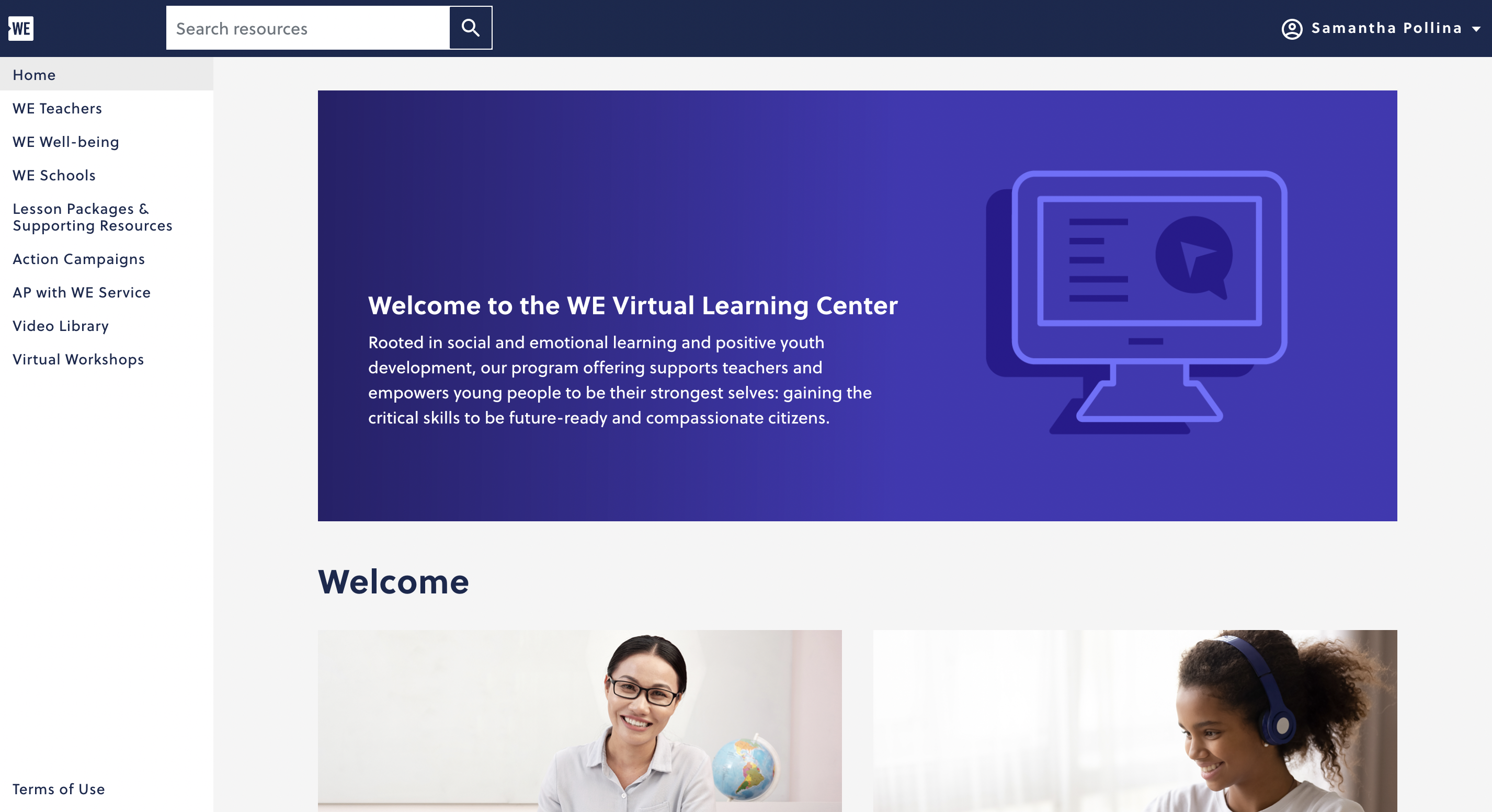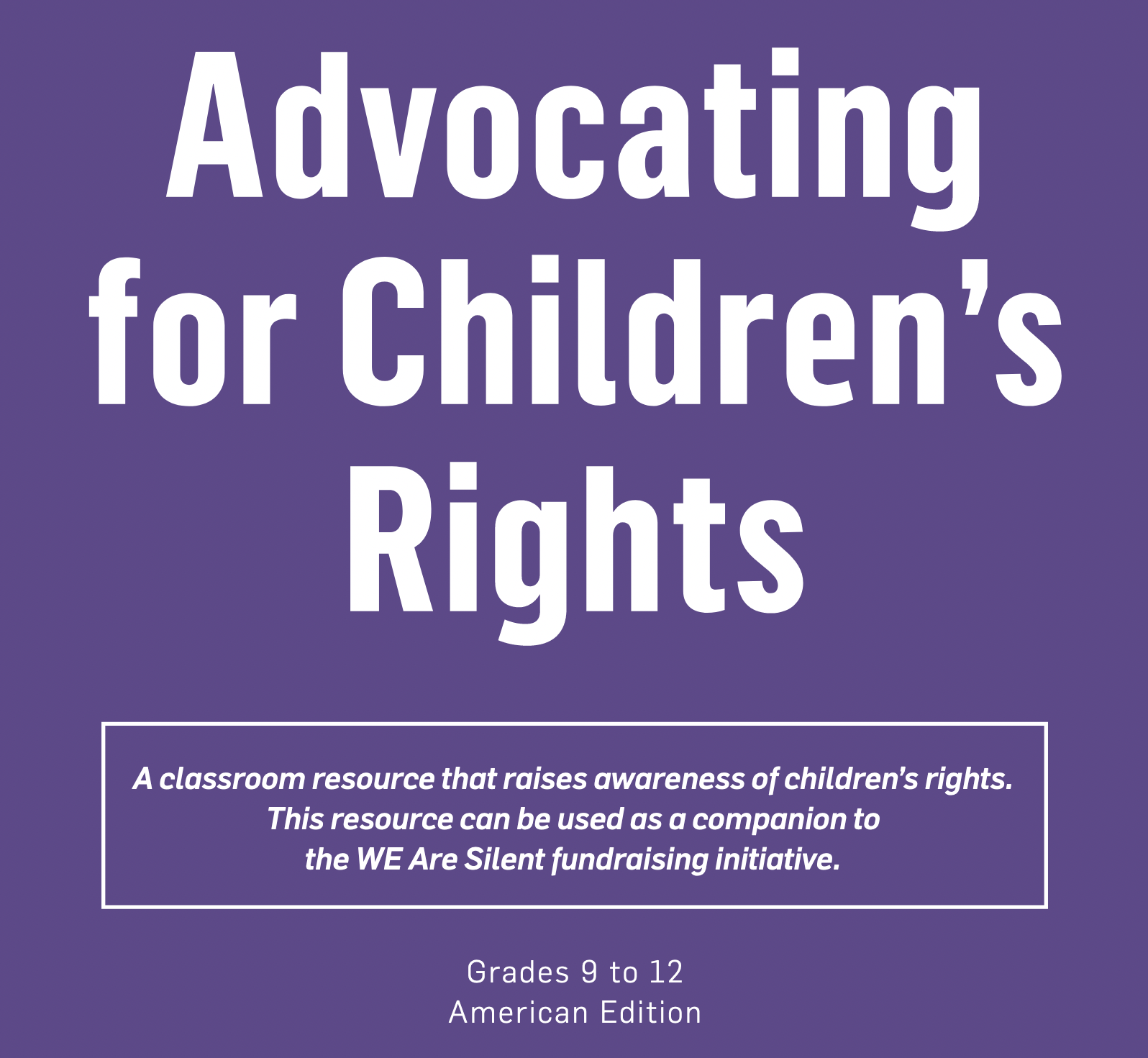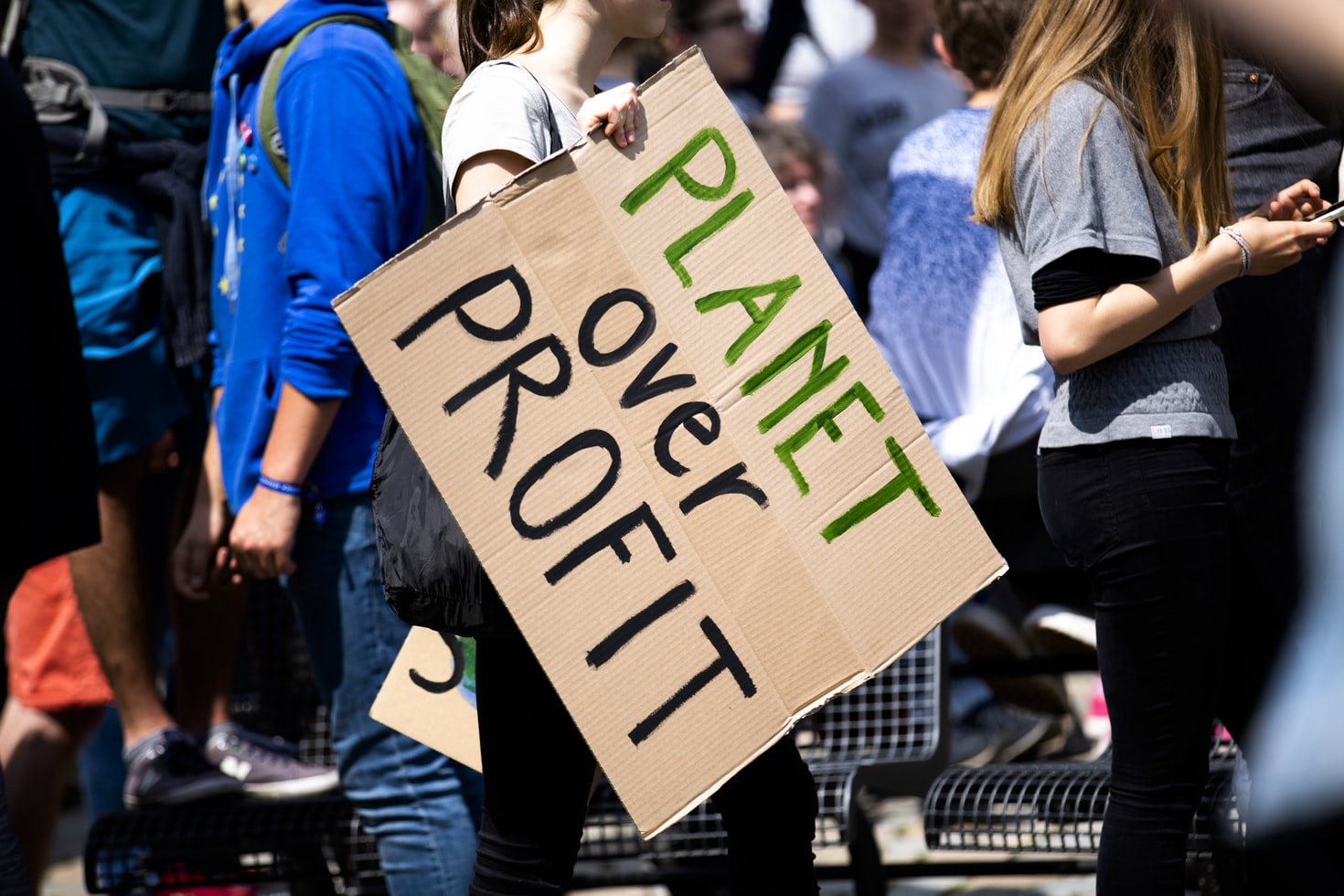Home » Posts tagged 'sdgs'
Tag Archives: sdgs
WE Are Silent: Teaching Children’s Rights

This week I took a look at WE.org, a website that provides resources and campaigns to change the world. It provides not only campaigns and volunteer work for anyone who wishes to become involved in bettering the planet, but also educator resources. Using the WE Virtual Learning Center teachers can locate lesson plans and other resources that focus on educating students on ways to promote a healthier society.
Through this website, I located a great lesson plan to utilize in a high school Social Studies classroom. The lesson focuses on children’s rights. The resource provides multiple days of plans, however, I will be focusing on Lesson #3. This lesson allows students to become aware of the denial of rights to children globally and how to become an advocate.

The lesson begins by telling the story of Malala Yousafzai, a young girl from Pakistan who advocates for the educational rights of girls. The plan provides a video as well as multiple questions to use for class discussion. This will provide students to share what they have learned so far, their point of view, and ask any questions they may have.

Next, the class will be divided into groups and provided a sheet of chart paper. Each group will answer the question “How are children and young people denied their rights?” The groups will then write constructive feedback on each other’s charts (using different colored ink).

The class will then discuss their charts and what the other groups wrote on their charts. Students will then provide an example of children being denied their rights and how they could become an advocate for those children. This will assess the learning of each student.
This lesson plan provides students with knowledge of children’s rights and advocacy. It also teaches them about the story of Malala Yousafzai and Pakistan. Students will be able to display their ability to write coherently and determine the meaning of words and phrases. This is a great lesson to use in a high school Social Studies class that teaches students about diversity and human rights as well as tying in the Sustainable Development Goals.
Thank you for reading!
Samantha Pollina
How SDGs address Climate Change as a humanity issue: Goal 13

Peace and prosperity are about more than a flourishing economy. It all starts with saving the planet. Reducing the amount of climate-related natural disasters and increasing the quality of human health are the major stepping stones on the road to achieving global prosperity and zero hunger.
These goals are on the list of the UN’s highest priorities in addressing climate change. The other priorities include food and security protection, protecting terrestrial and wetland ecosystems, expanding freshwater resources and contributing to key economic sectors and services that directly fund climate change administration. The climate change aspect of Sustainable Development Goals is now more crucial than ever, considering that the pandemic.
According to the UN’s goal to “End hunger, achieve food security and improved nutrition and promote sustainable agriculture”, 70-161 million more people had likely experienced hunger in 2020. This does not get any better with recent natural disasters like 2017’s Hurricane Maria in Puerto Rico, especially when the global average temperature was 34 degrees F above the pre-industrial baseline in 2020, further contributing to the growing climate crisis. Rising greenhouse gas emissions also contribute to this, and the UN suggests that by 2050, changing global economies will have to become carbon neutral as goal to battle climate change.
But the global climate change conversation is not all about the daily setbacks we face. Between 2015 and 2018, climate finance increased by 10%, which makes its annual average $48.7 billion. This monumental sum arguably reflects the way governments and citizens alike are taking climate change and its domino effect impacts more seriously. With all of this funding, there is hope for real change.
With Swedish activist Greta Thunberg’s recent popularity, the question of morality has entered this conversation, making more people aware of just how far-reaching the effects of climate change are if it took a teenager to make government officials wake up to the real crisis that the Earth faces. This saw real progress with the UN’s E-Course on Harnessing Climate and SDGs Synergies, which not only engages policymakers with the effects of climate change but also addresses Sustainable Development Goals as a whole.
The goals can be reached by never letting climate change leave the mainstream conversation, both in society and politics, much in the way Greta Thunberg has done. And when we follow the resources found in Goal 13, educating ourselves is the first step we can do as individuals to fight this crisis that affects not only the Earth but human rights itself.
Our Future: The Importance of SDGs
Our Earth isn’t a perfect place. There’s poverty, hunger, inequality, and on and on. It seems like every day we hear new news of more global issues that seem to be stacking higher and higher. Our Earth doesn’t have a singular government to act on these issues, but the United Nations is the closest solution. The United Nations is a committee with representation from every single country in the world. The UN has developed and crafted different plans of action to tackle these crises across the globe. Sustainable Development Goals (SDGs) are the way to achieving the global peace and prosperity that the UN is striving for. There importance is much larger than helping impoverished countries gain traction or establishing global peace and equality, rather they will help improve global climate conditions and future POAs. The future isn’t guaranteed for our Earth, and we may be shortening the life span of our generation and generations to come if we don’t start achieving these goals.

These are the Sustainable Development Goals. These aren’t new to me as I’ve had previous interaction working with them in classes before this, but to many it’s their first time seeing these. That’s a problem in my eyes. These goals are our future. These goals are for the betterment of our lives.
Of the seventeen SDGs, I would highlight three of them: no poverty, zero hunger, quality education. It’s so difficult to think and decide on which to prioritize because of the importance and connection between all of them. Educating our youth is definitely a priority. Educating them on these issues especially, because without teaching the next generation then these goals will never be met.
No Poverty and Zero Hunger interconnect with Good Health and Well-Being, thus why I prioritize them. Poverty ravages every country, everywhere. We can drive fifteen minutes away and see impoverished living conditions.
I really struggled thinking which issues need to be tackled first. And my final answer is: none. No one SDG needs to be prioritized over all the others. They all are critical and need to be addressed. As I’m going through them, we are not close to achieving any of them. The United Nations suggests that we complete this list of SDGs by 2030. It’s 2021, and I don’t believe we are close. Saving our world needs to be prioritized.
Sustainable Development Goals: Inclusive and Equitable Quality Education
The United Nations poses 17 interconnected goals to reach by the year 2030 as a “shared blueprint for peace and prosperity for people and the planet, now and into the future” (United Nations). While people working towards this may focus primarily on one goal all the goals are connected. Meaning if someone works to support goal 12: Responsible Consumption and Production they are also helping with goal 13: Climate Action, though it may not be the goal they intended. All the goals work together to reach a world of peace and prosperity.

As an educator Goal 4: Ensure Inclusive and Equitable Quality Education and Promote Lifelong Learning Opportunities for All, piqued my interest. As with every other aspect of life, this goal was greatly affected by the Covid-19 pandemic. In order to gain back the progress in improving education lost to the pandemic, 2021’s Higher Education Sustainability Special Event (an annual) focused on getting the 17 SDGs back on route to their 2030 timeline. While Goal 4 wasn’t the primary goal under the spotlight in 2021, as all SDGs are interlinked, it plays a key role in assisting with the others getting back on track.
Like the HESI Special Event, multiple sessions are arranged throughout the year in order to update progress and raise awareness for supporting the 17 SDGs. Other ways to meet this goal are:
- Promoting an inclusive and equal world for neurodiverse people
- Demand government to support improving education through funding
- Meet with policy makers to share opinions on what should change
- Implementing the SDGs into school curriculum
- Supporting non-hierarchal educational systems
- Work to become educated yourself and share your knowledge
- Spread the word about the SDGs
Reaching these 17 goals is vital to ensuring a peaceful and successful life for future generations. All of the goals, though their own separate entity, are interlinked and help to reach the others. The best way to reach these goals is to spread the word, many people are still unaware of these priorities for the future. In order to take further action we must first shine a light on the SDGs themself.

Thanks for reading! Be sure to follow me on Twitter.
Recent Comments